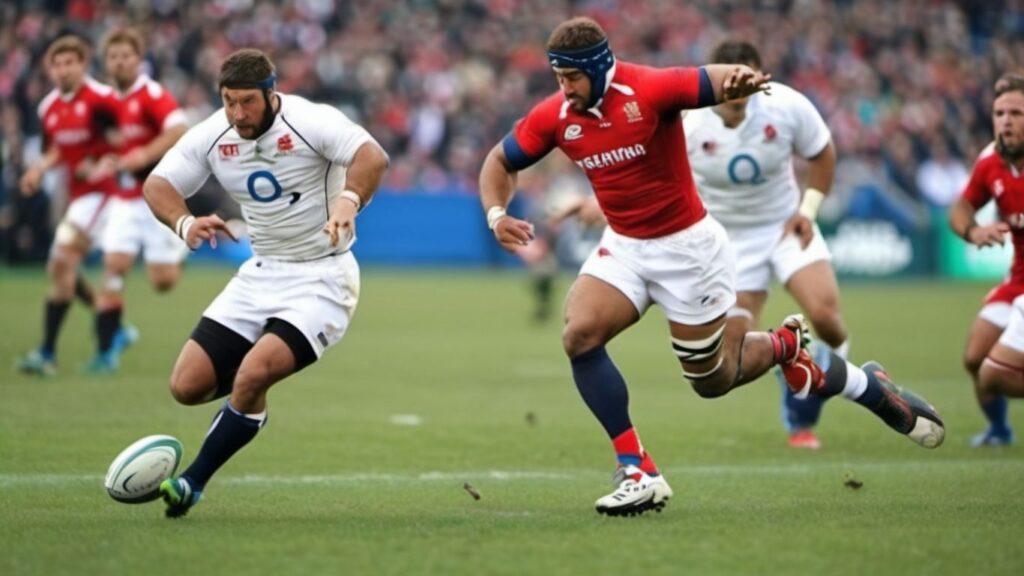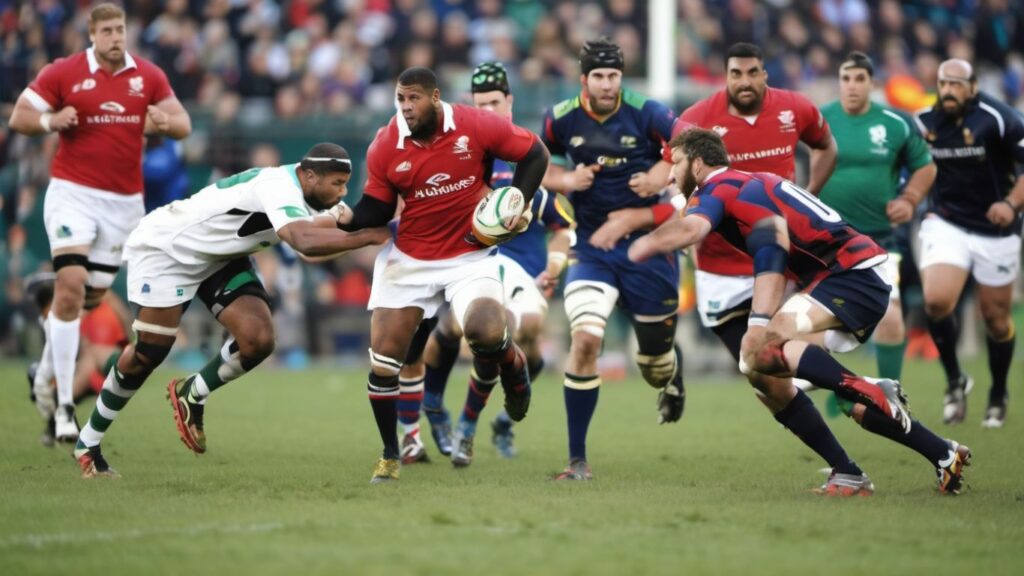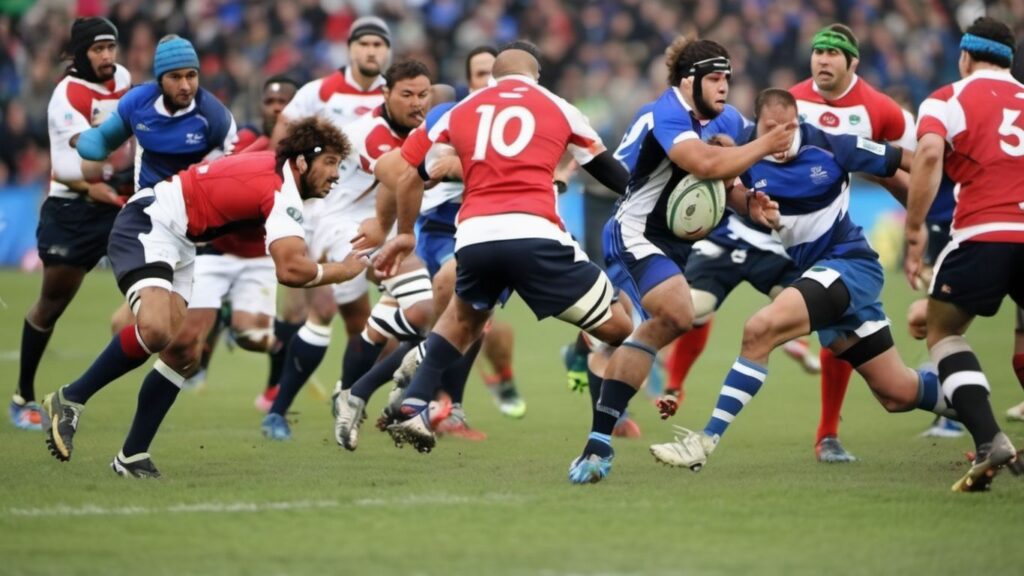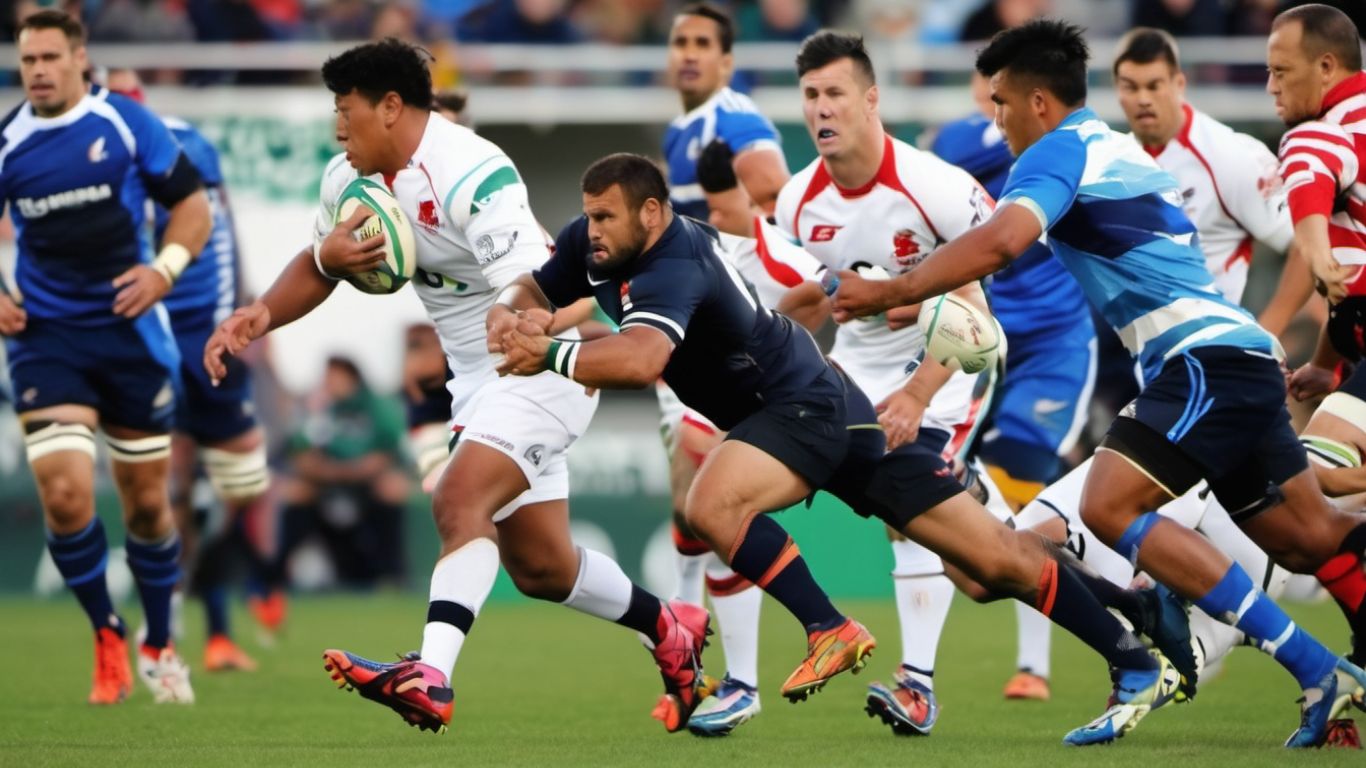When it comes to team sports, rugby and soccer sit on very different ends of the spectrum. Although they share a common ancestry and involve chasing a ball towards a goal area or line, the two are distinct in their gameplay, strategy, and physical demands. In this detailed comparison, we’ll explore what sets them apart, mainly focusing on aspects that captivate fans the world over – the physicality, strategy, and scoring techniques inherent in each sport.

Nature of the Sport
Rugby emphasizes strength and resilience, with players engaging in tackles, rucks, and scrums. It’s a high-contact sport where physical confrontations are a vital part of play. Soccer, or football as it is known outside North America, prizes finesse, technical skill, and quick agility. Soccer players dazzle with footwork and creative teamwork to manoeuvre the ball into the net, often avoiding contact to maintain the flow of play.
Scoring Systems
Scoring in rugby can be multifaceted. Teams seek tries by grounding the ball behind the opponents’ goal line, which is then converted for extra points. Additionally, penalty kicks and drop goals also contribute to the score. Soccer is all about goals – each successful shot into the net counts as a single point, which can be achieved from open play, penalties, or set pieces like corners and free kicks.
Ball Movement
Rugby’s rules regarding ball movement create a unique ebb and flow to the game. Players can pass the ball laterally or backward, but not forwards—though forward kicks are allowed. In contrast, soccer confines players to manoeuvring the ball using their feet, head, or torso, with only the goalkeeper having the privilege to use hands within the penalty area.

Field Size and Team Composition
Rugby fields are more significant than soccer pitches and house more players on the field at any given time – 15 in rugby union compared to 11 in soccer. This changes not only the dynamic of space but also the necessity for varied player specializations and formations in both games.
Protective Gear
Given rugby’s physical intensity, players come equipped with mouthguards, optional headgear, and sometimes light padding. Soccer players require minimal protection, with shin guards being the standard, reflecting the sport’s emphasis on skill over physical clashes.
Rules and Physical Contact
Physical contact in rugby is not only a common occurrence but also a tactical component. Soccer, however, aggressively monitors physical challenges – tackles are allowed, but only under strict conditions, and referees are quick to penalize dangerous play.
Audience Interest Points
Physicality in Gameplay
In rugby, the collisions between players are not just expected; they’re an integral part of the spectacle. Soccer’s physicality, while less prominent, involves sprinting, jumping, and the stamina to cover extensive ground.
Strategic Elements
Both sports require tactical prowess but with different focuses. Rugby strategies deal with territorial advantage and the initiation and retention of phases of play, while soccer strategies revolve around formation flexibility, ball possession, and tactical fouling when necessary.
Scoring Techniques
The rugby try represents a battle of endurance and strategic positioning, often culminating in a forceful push over the line. Soccer goals can arise from a swift counter-attack, a meticulously executed set piece, or a moment of individual brilliance.

FAQs
Q: What is the primary difference between rugby and soccer?
A: The primary difference lies in the level of physical contact and how each game is played. Rugby is a high-contact sport focusing on physical confrontations like tackles and scrums, while soccer emphasizes finesse, agility, and technical skill with minimal physical contact.
Q: How does scoring work in rugby compared to soccer?
A: Rugby scoring is multifaceted, including tries, conversions, penalty kicks, and drop goals, each offering different points. Soccer maintains a more straightforward scoring system where each goal, regardless of its origin (open play, penalty, or set piece), counts as a single point.
Q: Can soccer players use their hands during the game?
A: In general, soccer players cannot use their hands. The exception is the goalkeeper within the penalty area, who can use their hands to block or catch the ball.
Q: What kind of protective gear is used in rugby and soccer?
A: Rugby players use mouthguards, optional headgear, and sometimes padding due to the sport’s high-contact nature. Soccer players are required to wear shin guards as their essential protective gear, reflecting the sport’s reduced physical contact.
Q: Are the fields for rugby and soccer the same size?
A: No, rugby fields are typically larger than soccer pitches, which affects the gameplay dynamic. Additionally, rugby teams have 15 players on the field, compared to 11 in soccer, further influencing how the game is played.
Conclusion
Rugby and soccer may appear similar at a cursory glance, but they offer very different experiences to both players and fans alike. The brute force and strategic combat of rugby contrast sharply with the flowing artistry and pace of soccer. Understanding these differences elevates our appreciation for both sports, highlighting the unique thrills that each one brings to the stadiums and screens around the world. Whether you’re in awe of the rigorous teamwork and sheer power of a rugby scrum or the deft touch of a soccer player slotting the ball past a keeper, there’s no denying the distinct charm and intensity that both games provide.








